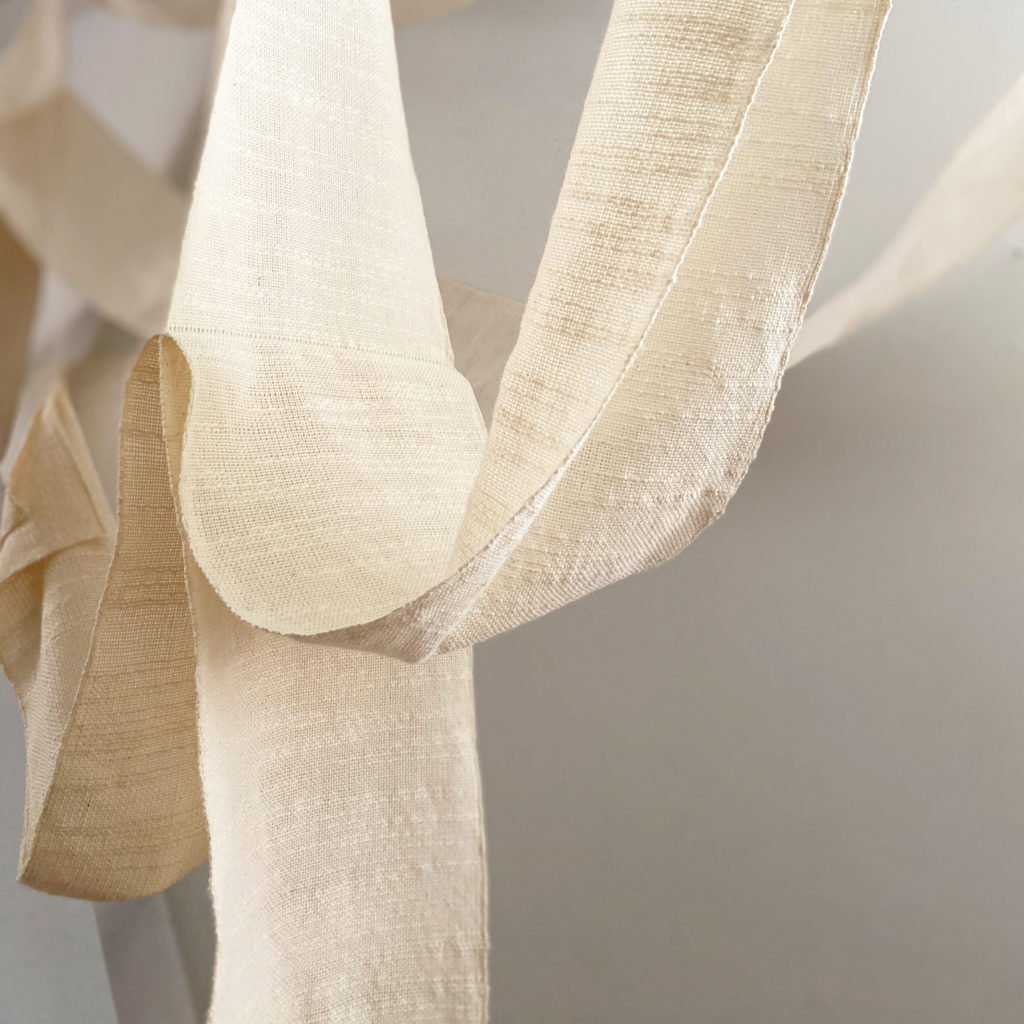For Vancouver artist Amanda Wood, the journey is as important as the outcome. Amanda explores time, labour, connectivity, digital space and self-organizing systems through gestures in hand woven cloth. She is currently working on a large-scale installation for the Alternator Centre for Contemporary Art in Kelowna, BC. Here she shares her inspiration and process for creating the three-dimensional drawings that make up her latest work, robustness to uncertainty.

Amanda Wood is a Canadian artist living and working on the traditional, ancestral and unceded territory of the Coast Salish peoples – Sḵwx̱wú7mesh (Squamish), Stó:lō and Səl̓ílwətaʔ/Selilwitulh (Tsleil-Waututh) and xʷməθkʷəy̓əm (Musqueam) Nations.
Her practice is process and materials driven. Current work considers time, labour, physical gesture, connectivity, digital space and self-organizing systems.
“How can a physical gesture represent the remnants of an action: an ephemeral, temporal phenomenon, a space of becoming?“
If we freeze time to see self-organizing systems more closely, can we discover ourselves in relation to physical and digital experiences? How can a physical gesture represent the remnants of an action: an ephemeral, temporal phenomenon, a space of becoming? How can it represent a murmuration, the swell of a piece of music, the forces of gravity, the gradations of a shadow, a conversation or a movement through digital space? Can it be done with a line drawn in three-dimensional space?
These questions have been swirling around my brain for over a year. This past fall, I was welcomed into the community at the Ou, an artist-run space in the Cowichan Valley, with the thought that I would explore these ideas in an organic way. This time and space among optimistic artists who offered why not and what if to my random thoughts, created opportunities to try new materials and allowed me to work big, which is not something I can do very easily in the city.


The Ou studios are in a former boat-building shed, which is long and narrow, and so I was able to work full-scale on large drawings and models. My practice involved slow looking, researching starling murmurations and manipulating some chair caning as physical representations of time-based lines and shapes. Each day I gave myself material limitations and set goals. The only constant was the idea of a three-dimensional line that explored patterns and shapes. Evening reflection, walks in the woods and informal critiques with my studio mates and visitors opened up even more possibilities and I balanced self-imposed limitations with a why not approach.
The Ou studios are in a former boat-building shed, which is long and narrow, and so I was able to work full-scale on large drawings and models. My practice involved slow looking, researching starling murmurations and manipulating some chair caning as physical representations of time-based lines and shapes. Each day I gave myself material limitations and set goals. The only constant was the idea of a three-dimensional line that explored patterns and shapes. Evening reflection, walks in the woods and informal critiques with my studio mates and visitors opened up even more possibilities and I balanced self-imposed limitations with a why not approach.

Over the course of two weeks, my daily drawings and explorations grew into three-dimensional form and eventually into a full-scale model that I was able to bring back to my studio and develop further into woven form.
Back in the studio, my process became more structured with practical material tests and development of a systematic weave plan. I wove a half-scale model and made adjustments before working even smaller by creating a physical model of the gallery space.
Even with all of this planning, the work is shifting again now that installation is underway. I am excited to see how its final form evolves, and to share it with a broader community

I am looking forward to spending the next year taking these ideas and evolving into new materials and processes with my upcoming exhibition at the Craft Council of BC next summer. Watching the work unfold in ways that I could never imagine is always exciting. The intersection where concept, materials and technique meet is where the magic happens for me.
I gratefully acknowledge the support of the Canada Council for the Arts for this project.


